Roman blinds in the interior of the kitchen: varieties, features of choice and fastening
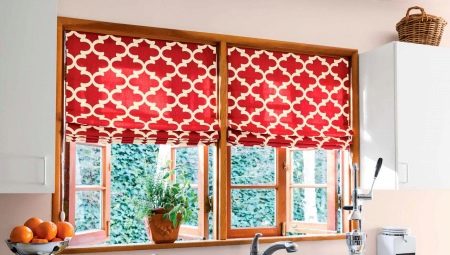
A Roman curtain is a strip of fabric, fixed at its upper part to the cornice, which rises upward in beautiful folds with the help of a cord and slats. The latter are fixed on the back of the curtain.
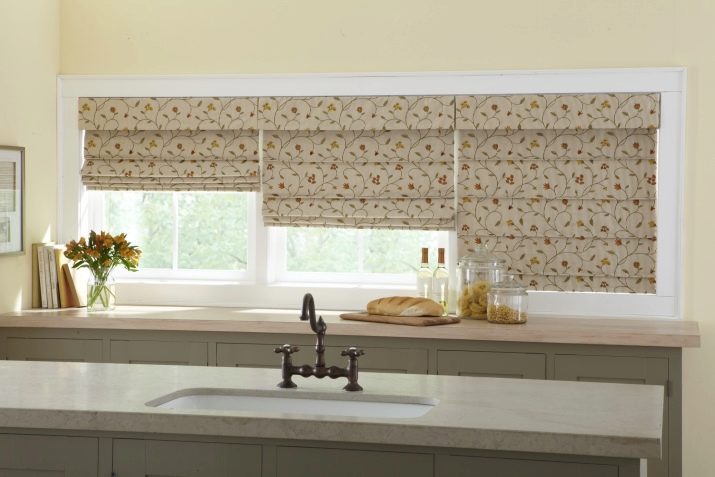


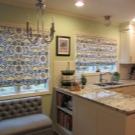
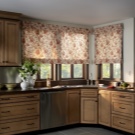
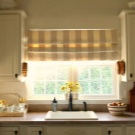
A steel metal rail fixed at the bottom helps to keep the products in perfect shape.
Advantages and disadvantages
The advantage of Roman blinds is their simplicity, versatility and functionality. They are suitable for windows of any size, and also look harmonious in the interior.
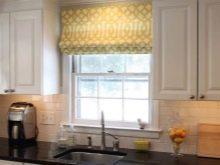
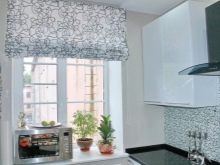
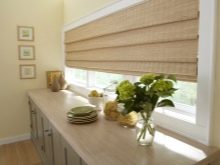
Curtains will help to reliably protect the kitchen from the scorching sunlight, but at the same time it will not become dark in the room - the fabric gently diffuses light. By adjusting the degree of rise of the product, you can let in the required amount of light into the kitchen. Such products will become a real salvation for the inhabitants of the first floors, since they reliably hide the inside of the dwelling from prying eyes.

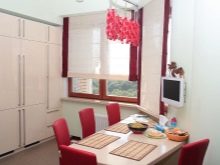
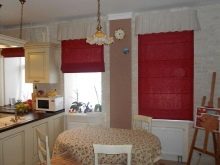
Roman shades are a combination of the functionality of blinds and the attractiveness of curtains. The short length avoids contamination of the curtain, which is especially valuable in the kitchen. However, if desired, such products can be combined with the usual tulle, fabric curtains, lambrequins or curtains.
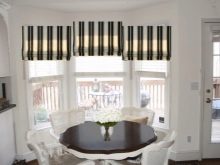
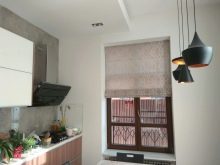
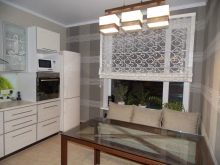
Due to the fact that Roman blinds are quite compact, it is possible to relieve the window and sill area. In this case, you can not only free up space, but also visually make the room light and spacious.
Such textiles are quite easy to care for - it will not be difficult to remove and wash Roman blinds. You do not need to smooth them, because they will straighten themselves thanks to the metal plate. The curtains will always be perfectly smooth.There is no need to touch the fabric to raise or lower the fabric and is generally effortless.
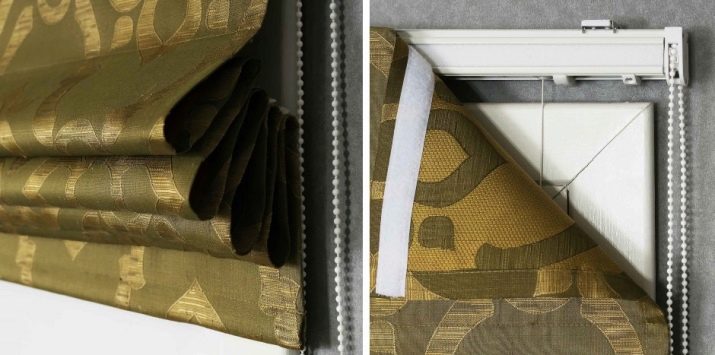
The disadvantage of curtains is the fact that they cannot be pushed aside. In addition, to ventilate the room, you will have to fully raise them. Due to their laconic appearance, in some interiors, structures of this type look quite strict and boring. However, this can be easily leveled by combining products with fabric options, tulle or other decorative textiles.
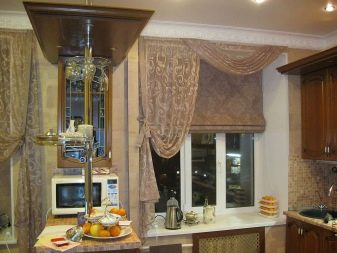
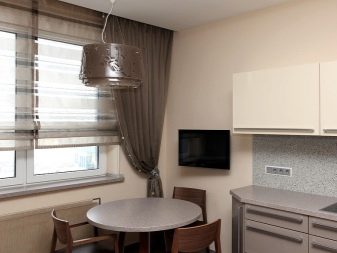
Views
There are two varieties of Roman designs. They will be discussed below.
- Classic. When unfolded, such a product looks like it is a smooth cloth of fabric. When lifted, it forms uniform horizontal folds. The classic version looks simple, but elegant. It is suitable primarily for classic interiors.
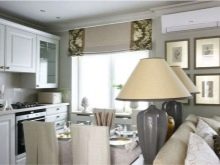
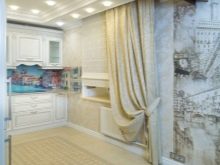
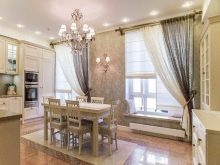
- Cascade analog when opened, it forms folds, forming a cascading drapery in the lower part. This is a more relaxed style that fits in with art deco, country and some classic kitchens.
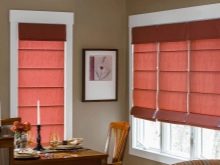
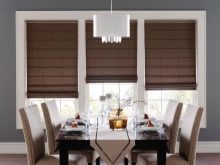
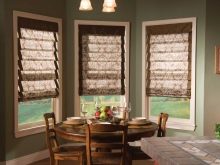
The described types of curtains have a frame. In addition, there are frameless analogs. In this case, the lift-control cord runs down the middle of the curtain. When pulling it, the curtain is collected in the center or tucked from the ends.
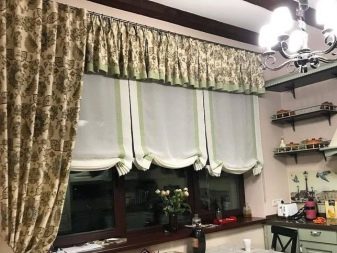
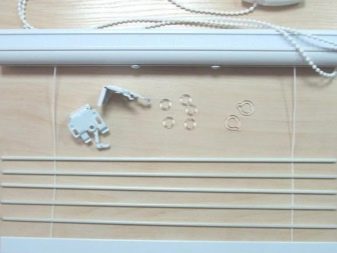
Depending on the design of the regulating mechanism, the types of products presented below are distinguished.
- Rope. The slats and slats are replaced by a translucent rope. Thanks to this, the curtains are lightweight, look airy and gentle.
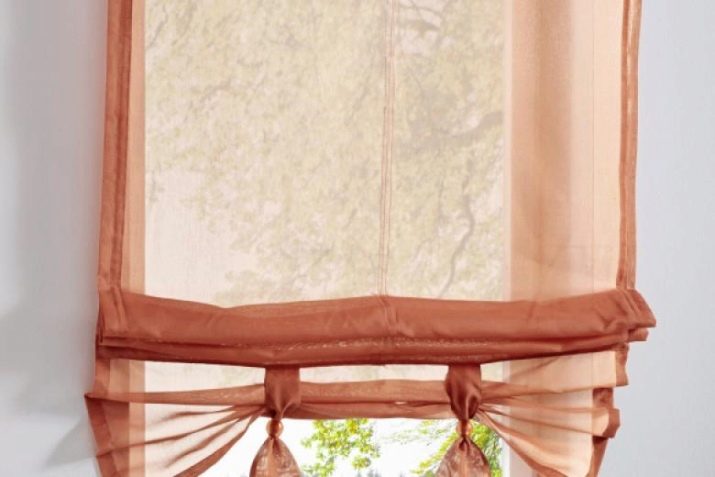
- Rotary chain. The principle of operation of such a product is similar to the operation of blinds. The system is a chain acting on the rotary shaft and rotor units. This design is recommended for heavy fabrics as it is durable and reliable.
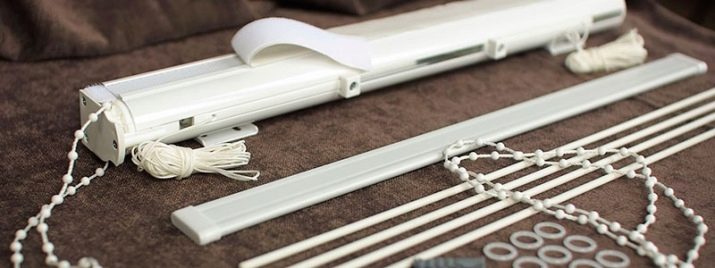
- Elementary (simple stick). Such products have ropes on the sides and thin sticks instead of slats in the lower part. To fix the curtains in the raised position, the ropes have to be fixed with something. It is clear that this is very inconvenient; therefore, elementary constructions are not very popular.
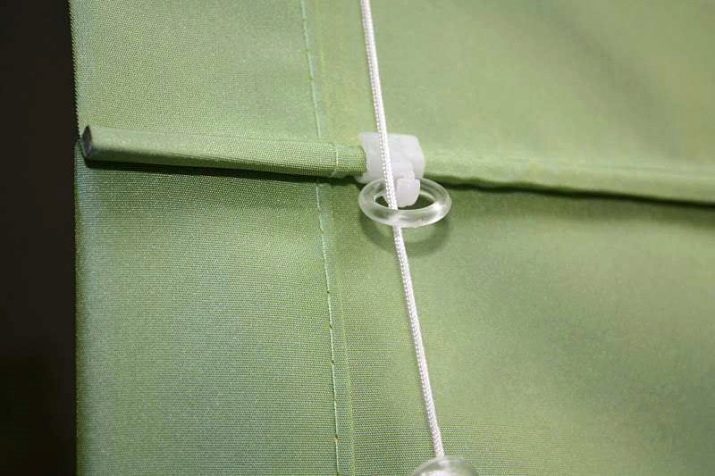
- Combined. These options involve a combination of rotor-chain and rope mechanisms within the same Roman structure. Usually used when combining fabrics of different density and texture. A strong rotor-chain mechanism is necessary for dense versions, however on thin fabrics it will look rough and can even damage the fabric.
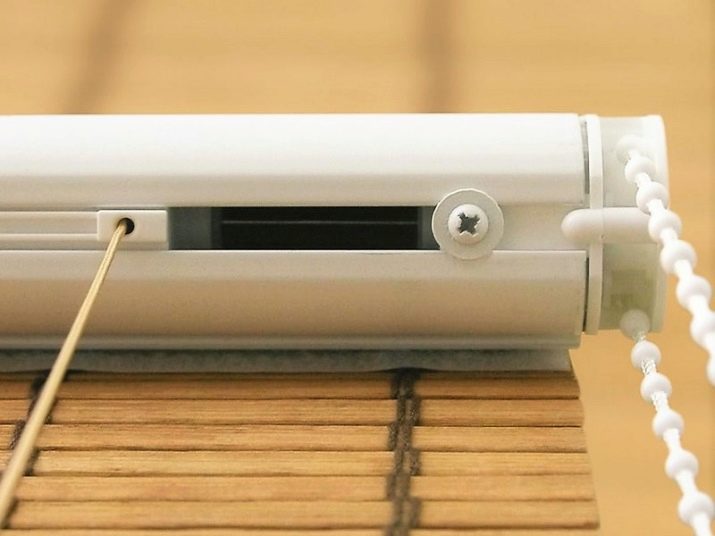
In this case, rope analogs come to the rescue.
- Electronic. The curtains are raised and lowered using a remote control or a control unit. Products with the simplest Chinese lifting mechanism are quite common. They seduce the buyer with a low price, however, due to the unreliability of the mechanism, their service life is very limited - it is better to give preference to more expensive options.
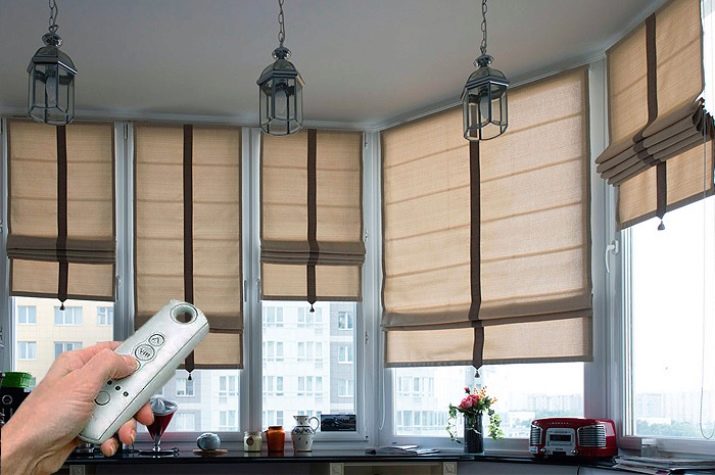
Roman blinds can be divided into subgroups by size. Standard options are products with a width of 60 or 80 cm and a length of 160 cm. For windows of medium and large sizes, textiles with a length of 160 cm are usually purchased, while the width can be 100, 140 or 200 cm. For square windows, which are usually found in summer cottages or in country houses, there is a standard: 160x160 cm.
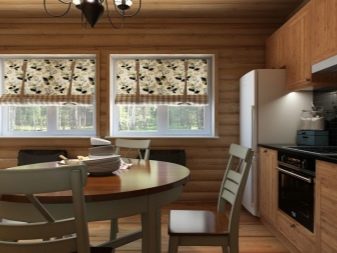
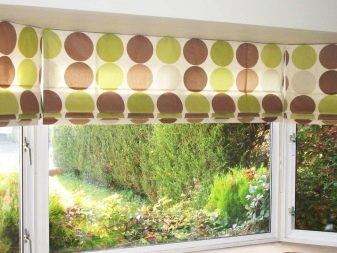

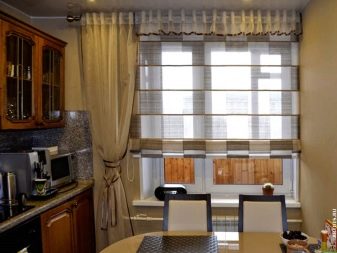
For a large window, you can pick up one canvas of a suitable size or use 2-3 narrow models. This approach will make the operation of products more functional - you can "finely" adjust the light transmission capacity of curtains by lifting only one of several products.
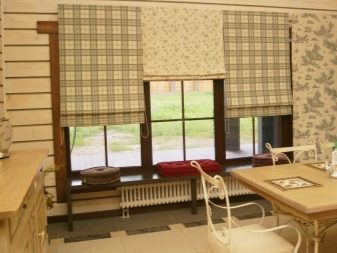
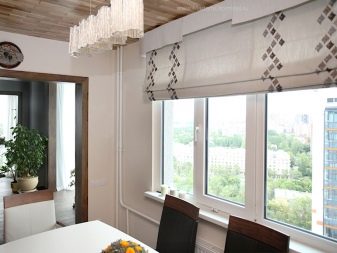
For windows of non-standard sizes, as well as if you want to get a product of a specific design and color, roman blinds are usually sewn independently or to order.
Materials (edit)
Both synthetic and natural fabrics can serve as material for products. The choice is influenced by the preferences of the hostess and the style features of the room. However, most experts and housewives agree that it is better to purchase synthetic material for the kitchen, because it is considered resistant to dirt and easy to clean.
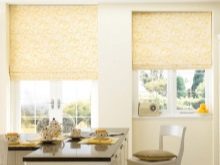
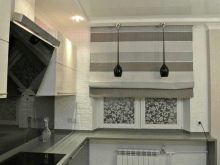
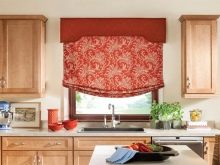
For windows facing south, it is recommended to buy curtains made of thick materials - they will better retain the sun's rays. If the kitchen does not receive enough sunlight, it is better to opt for light, translucent fabrics, for example, based on polyester with the presence of rayon or cotton fibers.

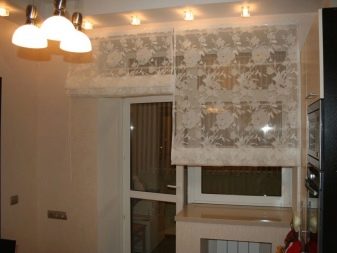
Among the common types of fabrics, several options can be noted, presented below.
- Synthetic. These include polyester, as well as silk, acrylic and lavsan. The material retains its shape for a long time, does not accumulate static electricity, dust, is easy to clean, however, under the influence of high temperatures it can change its shape.

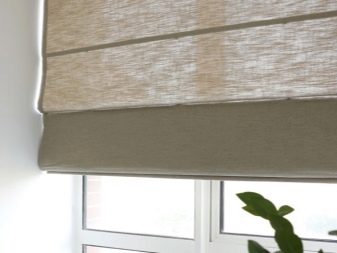
- Natural. Popular options are cotton, linen, silk, and cambric. Their advantage is environmental friendliness, visual appeal, nobility. However, in care, these materials are capricious and quickly fade in the sun.
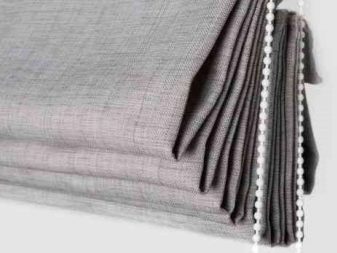
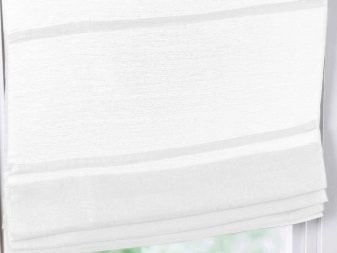
- Combined (mixed). They are made from natural and synthetic fabrics taken in different proportions. Thanks to this, the material is attractive in appearance, easy to care for, and durable. Among the mixed fabrics, taffeta and organza can be distinguished.
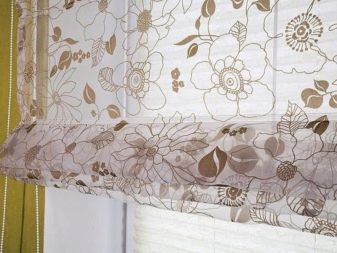
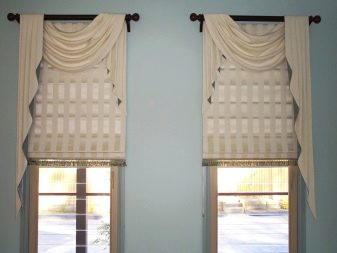
- Wooden. This group includes wicker bamboo, which is environmentally friendly, original appearance and low weight.
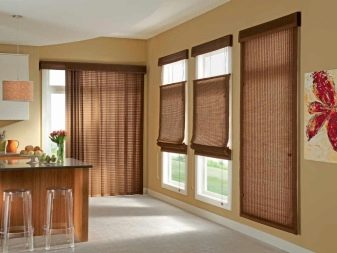
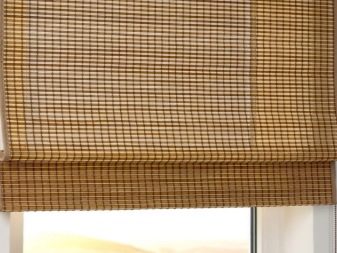
Design options
By the name of the curtains, it is easy to guess that they originally appeared in ancient Rome. Traditionally, they were made of brown material, which symbolized wealth and prosperity. Today the assortment of textiles in brown is also quite wide. Such curtains look harmoniously in classic interiors and in kitchens with wooden surfaces.
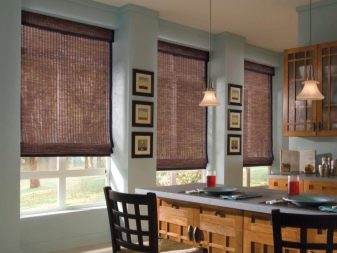
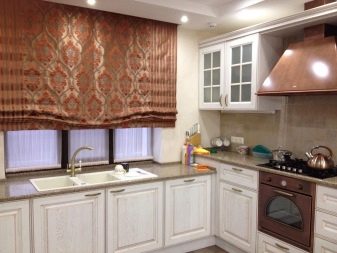
Curtains in brown shades look inconspicuous and provide good protection from the sun.
They can have many shades: from coffee and golden to rich chocolate. All shades of brown can be mixed with each other or combined with pistachio, pink, lilac, olive or muted blue.
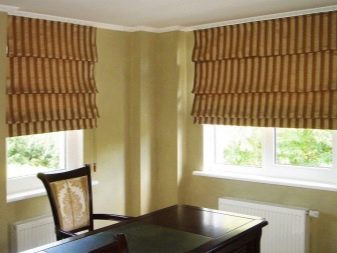

White curtains, as well as analogues in cream, pastel and beige, can be considered classics. Their advantage is compatibility with other colors. Typically, white curtains are used in classic interiors. Such products look great in combination with dark lambrequins. Since light curtains will have to be washed more often, you should choose a product made of dense synthetic fabric.
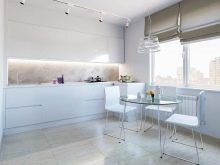

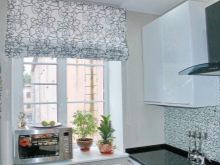
Products of the green palette are also considered universal - they will create a relaxing, calm atmosphere in the kitchen. Suitable for both classic (usually muted green, olive shades are chosen) and modern (the shade becomes more saturated, it is possible to use salad color) kitchen styles.
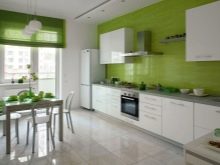

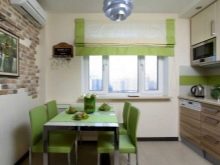
Yellow color will bring a feeling of light and warmth to the room, energize. This shade will be especially successful in a kitchen with insufficient lighting, as well as in rooms facing north. But on the southern sides, where the kitchens get quite hot, you can use blue models - they will add a feeling of coolness and lightness to the room.
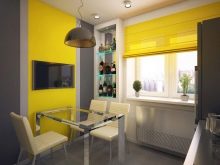
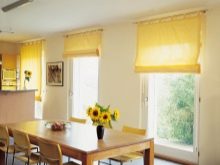
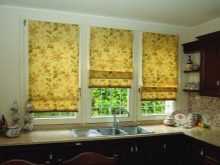
Red curtains look original and stylish, but it is better to use them on large or medium-sized windows. The shade should be dim and flashy, but more muted, noble. For example, a burgundy or crimson color will look great.
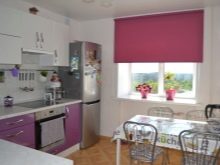
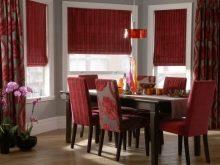
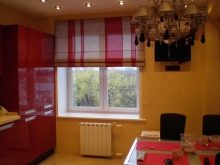
Red Roman shades look great in minimalist and high-tech interiors, combined with smooth lacquered surfaces.
Black roman blinds look no less impressive. However, they are only suitable for kitchens with a lot of natural and artificial light.A combination of black with white or pastel shades will help to avoid the feeling of gloom.
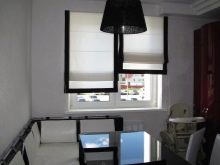
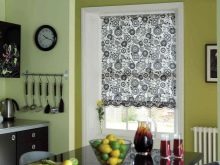
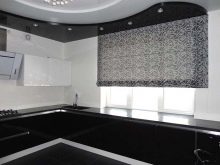
For kitchens in the spirit of shabby chic, country, Provence and other rustic styles, Roman curtains with a pattern will be optimal - it can be a small floral or plant print. The image is placed on a white or light background, and the image itself should not be bright, but slightly muted. It is recommended to complement this accessory with wooden furniture, ceramic or clay dishes, natural or artificial potted plants.
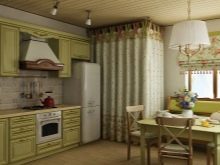
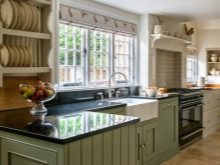
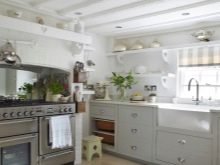
If the owner does not like the drawings or those are already on the walls, it is better to purchase light transparent options. The use of frameless models is acceptable.
For a modern kitchen or dining room, go with a geometric print. A product with a contrasting edging will look no less impressive. It is worth noting an important point: the edging attracts attention, so there must be perfect order in the window area.
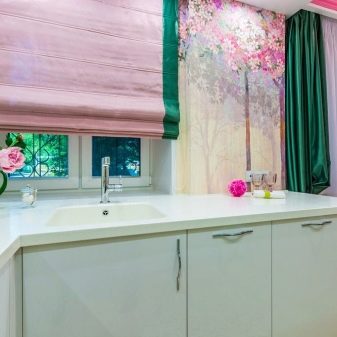
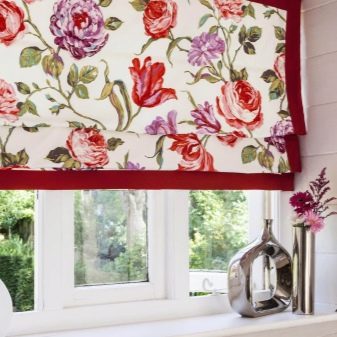
In a Scandinavian-style kitchen, classic frame models made of dense white matter will be appropriate. The preference can be given to natural fabrics or synthetics, stylized as such. New items (bamboo options) are appropriate in oriental interiors. In addition, they can be used for room zoning.
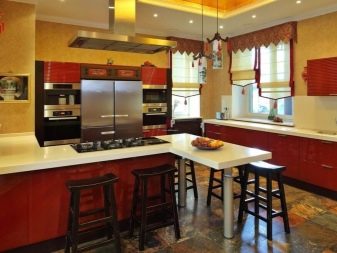
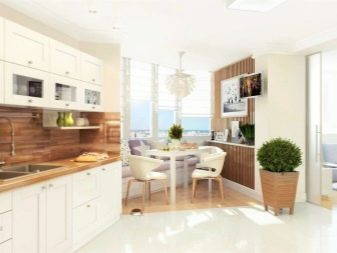
Since Roman shades have a laconic design, they can look pretty strict. Avoid this by combining products with tulle or fabric curtains with drapery. However, this technique is not applicable for small windows, high-tech interiors and minimalism.
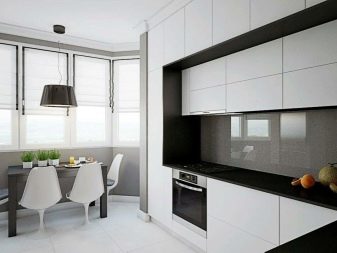
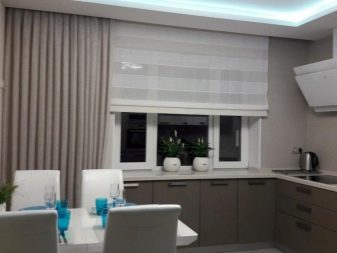
For the rest of the modern and all classic interiors, such a tandem will be advantageous. Roman and fabric curtains can be matched in color or combined according to the principle of contrast.
On narrow windows, the curtain can be “let in” only from one side, intercepting it in the middle with a ribbon or other decorative element. A large window is decorated with fabric curtains in the traditional way (on both sides). At the same time, it is desirable that their shade be lighter than the color of Roman curtains. You can combine Roman textiles with plain fabrics.
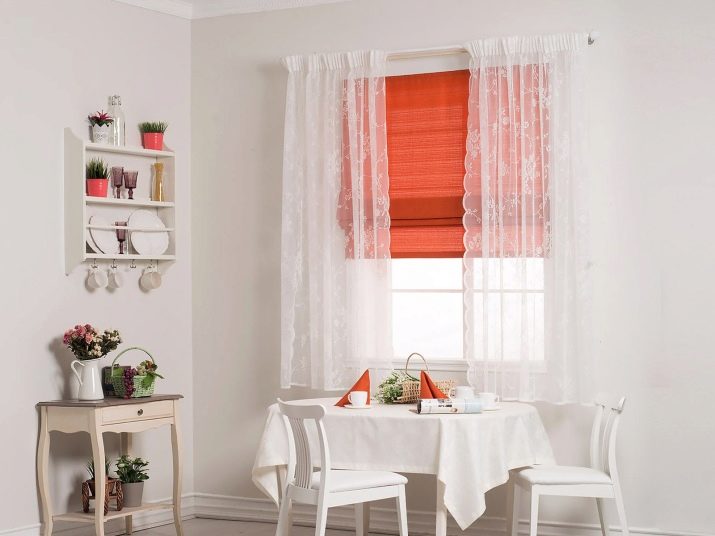
The narrow kitchen will be visually expanded with horizontal striped products. If the goal is to visually raise the ceiling, then it makes sense to choose a product with a vertical strip. The selection of curtains to match the walls of the kitchen allows you to create the effect of a spacious room.

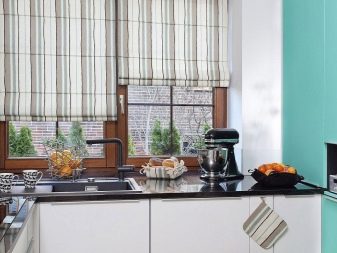
Roman textiles can be combined with walls or furniture not only by color, but also by texture. It can repeat the pattern of the wallpaper or the texture of the headset. A win-win option to visually enlarge the kitchen is to use a translucent light shade of textiles on the windows.
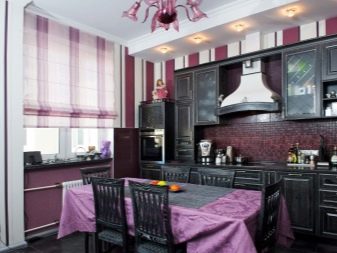

Comparison with roller blinds
According to the principle of fastening and functioning, Roman blinds can be compared to roller blinds. but the latter are not gathered when lifting in beautiful folds, but are wound into a roll... For this, the product is equipped with a special shaft. The shaft, in turn, is hidden in a protective box, and the wound fabric is also hidden there.
Thus, the different operating principle of curtains dictates differences in the design features. Roller blinds are attached only to the sashes of the window, while Roman blinds can be fixed both to the sashes and to a standard cornice.
Rolled products can have a "day and night" system, for which two types of cloth are combined: dense (nocturnal) and light (daytime). You can use them together or separately.
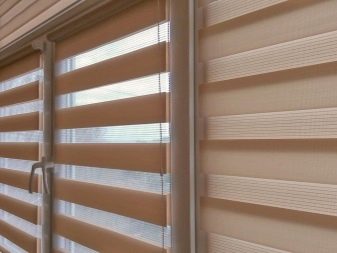
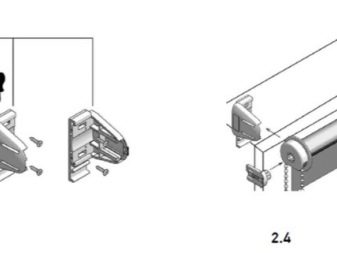
Roman blinds do not have such a system.
Features of choice
The density of the fabric is usually chosen taking into account the degree of light in the room. For kitchens facing the south, well-lit side, it is logical to purchase a dense product. If there is not enough sunlight in the kitchen, preference is given to light, translucent options.

You should decide in advance on the method of fastening. If there are wide window sills in the kitchen, then fastening the curtains to the window is usually chosen.Then the window sill can be used as a work surface. When mounted externally on a standard cornice (this method is often preferred if you wish to combine a Roman design with fabric textiles), the length of the product should overlap the window sill by 5-10 cm.
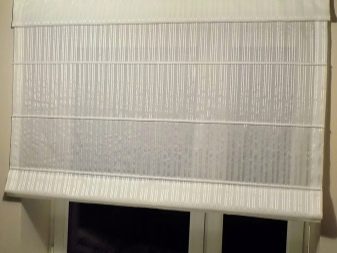
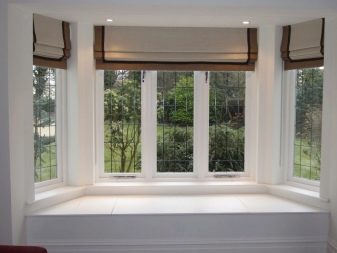
It is worth paying attention to the lifting mechanism. The simple stick option should be abandoned right away, since the kitchen is not the place where it will last for a long time. Make sure that the type of mechanism is suitable for the density and weight of the curtain. Heavy materials cannot be lifted with a rope cord, and light ones cannot be lifted by a chain-rotor system.
You also need to decide what kind of design and functionality the curtains should be. To create austere classic interiors, as well as protection from intense sunlight, you should choose classic products from dense fabrics with guides and weights. The product should fit snugly against the window without leaving folds.
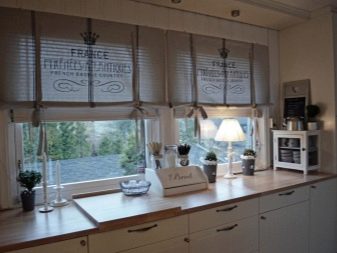
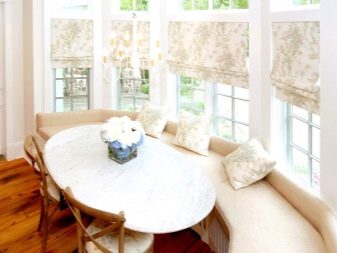
For a more relaxed interior, as well as in the absence of the need for protection from the scorching sun and from prying eyes, you can choose frameless options.
It is important to take into account the style of the interior, its colors. If you plan to combine Roman blinds with tulle, it is better to choose both textile options at once. Kitchen-living room, studio kitchen-dining room will look especially advantageous with this combination. When choosing bamboo products, it is recommended that they match with windows, doors or wood fittings.
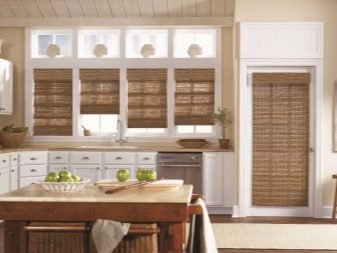

How to fix it?
Window decoration with roman blinds is carried out on a mini or standard cornice. In the first case, the fabric canvas is located close to the window, which saves space and free up the window sill. Roman blinds are attached to a standard cornice if it is planned to combine them with other types of curtains.
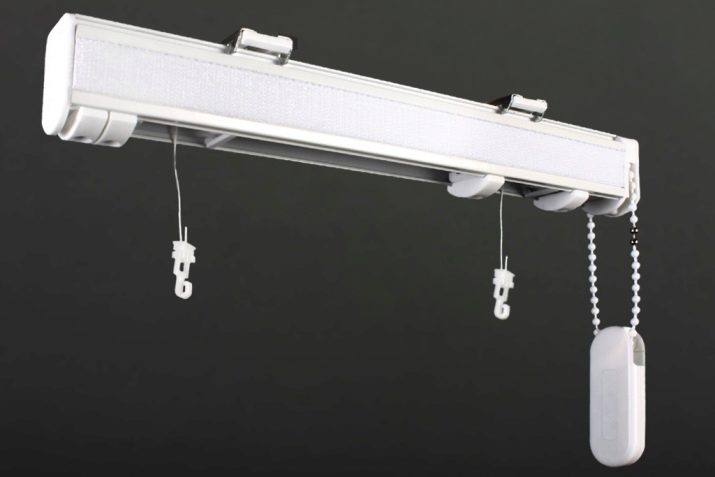
In addition, when fixing the product on a standard cornice, it becomes possible to ventilate the room without raising the curtains.
There is an option to use adhesive tape instead of a curtain rod. One part of it is attached to the window, the second - to the upper part of fabrics. However, in the case of Roman blinds, this mounting method is inconvenient. It is worth noting that it can be mounted on both plastic and wooden windows.
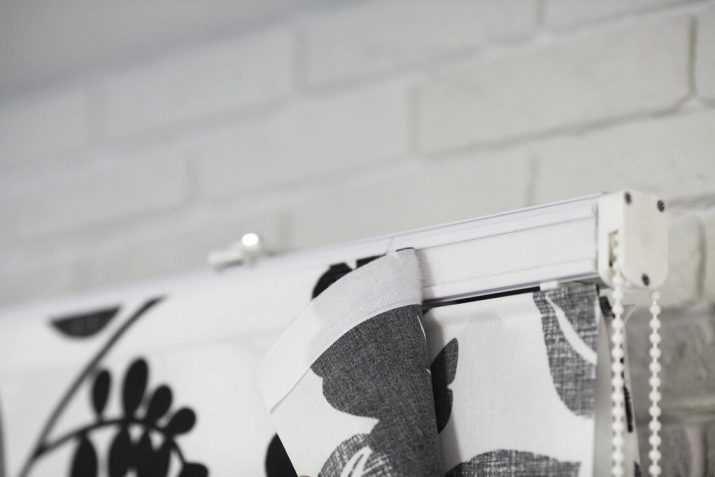
For the advantages of Roman curtains, see the video below.








